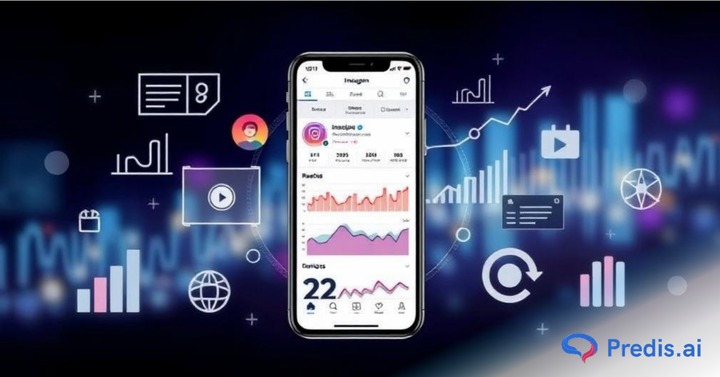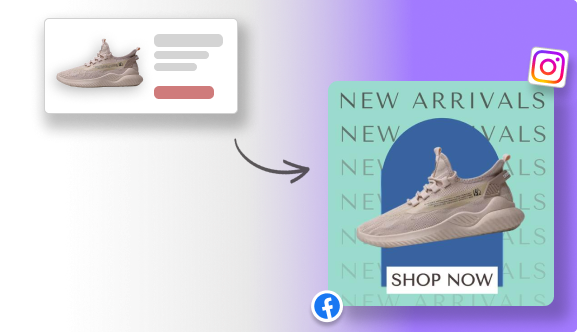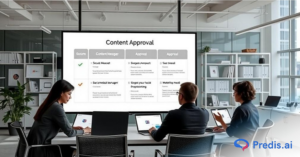If you are someone who has spent so much time poring over and over your Instagram ad analytics but don’t understand the heads or tails of it. Don’t worry, almost all pro marketers have started there. What they didn’t have but you do is this guide. In this guide, we will dive deep into the important metrics in your Instagram ad campaign to help you understand what you are looking at.
This guide breaks down the most important metrics, what they really mean, and how to use them to improve performance. Think of this as the scorecard for your ads — the framework that tells you what’s working, what’s not, and how to iterate with confidence.
So, let us begin!
Why are Metrics Important And How to Choose Which Ones to Track?
In conventional print-type marketing, people ran ads and forgot about them. They had no way of finding out if their ad was successful or not (until a customer specifically tells them).
But today’s modern digital media advertising is not the same. It equips us with tools to know if our ads are working or not. And if it doesn’t, we are able to analyse the detailed dashboards and figure out where we hit a snag. All of this was possible because of the metrics we see in our analytics dashboard.
Choosing the Right Metrics:
There are no set rules that dictate which metrics are to be chosen for measuring. You can pick and choose whichever metrics align with your end goal and measure them.
For example, if you are looking to put your brand in front of new people, then you can check out Reach.
But before choosing a metric to focus on, you need to ask yourself the following questions:
- What is the SMART (Specific, Measurable, Achievable, Relevant, Time-bound) goal of the ad that you are running?
- What are some of the metrics that you feel are directly linked with this objective?
Based on these questions, select a few metrics to focus on. Measure them from time to time to see which ones are leading and which are lagging. Based on these values, you can reassess your ad strategy.
Sell More via Instagram 💰
TRY FOR FREE7 Key Metrics To Check If Your Instagram Ads Are Succeeding
How are you supposed to know if your ads are working or not? By looking at your Instagram Analytics. But what are you supposed to be looking for? Read on to know!
1. Impressions
This is the most basic metric that needs to be reviewed. This refers to the number of times it is placed before an audience. Now, this is an important metric because comparing this with your CTR rates can help you know if your ad is capable of getting the attention of your audience.
2. Reach
This is the number of people who saw your ads but may or may not have interacted with them. If you are confused between impressions and reach, there is a very subtle difference that helps you tell them apart.
Impressions are when the ad is placed in front of the user, but whether they have seen it or not is not taken into consideration. However, a reach is where the users who have seen the ad are taken into consideration.
For example, if an ad is shown to a user twice in the day, then there are 2 impressions. But since it is the same user, the reach is 1.
3. Click Through Rate
CTR is the number of clicks your ads are generating. This metric is calculated by dividing the number of clicks on your ad by the number of impressions the ad had.
Keep in mind that CTR is a very valuable metric, and the more people interact with your ad, the better it is for your brand!
Each Industry has its own benchmark CTR values, and when creating an ad, you should aim to reach this rate.
4. Cost per click
CPC is the measurement of the cost you incur per click. This is calculated by Total cost/Total clicks.
This means, when your ad gets many clicks, your cost per click goes down. And this is the ideal situation that you want to be in. Because if your Cost per click is too high, then not many people are clicking on your ad. In that instance, there is less conversion. So ultimately, you are losing money on your ad.
The final takeaway here is that CPC needs to be less. If it isn’t, maybe start rethinking your ad.
5. Cost Per Conversion
This is the same as CPC. But instead of dividing cost by clicks, this metric divides it by conversions.
In other words, Cost Per Conversion is the total cost divided by the cost per conversion.
And like any other metric that starts with cost, this metric’s value needs to be low as well. Because if your cost per conversion is high, then it means you are not making enough conversions. And who wants that?
To measure your conversions, you need to connect your website to Google Analytics, set up conversions, and measure the values using UTM.
Note: Each ad in your campaign might have different ultimate conversion metrics, and each of them has different weightage. So, make sure to track each ad separately and accurately.
6. Return on Ad Spend (ROAS)
This is the ultimate ad metric that shows if your ad is making you money or breaking your bank.
Return on Ad spend is the measure to check how much you spent on your ad and how much your ad has made for you in return. The exact formula is Total Revenue/Total Spend.
If this number is positive, then congratulations, your ad is on the right track and is working well. Although you can still optimize it if you want.
But, if ROAS is in the negative for you, then back up and find out what is going wrong because your ad is losing you money.
7. Custom conversions
Custom conversions are finding out the number of people who are completing that ultimate conversion goal in your ad.
For example, you are running an awareness stage campaign, where the ultimate goal is to have people sign up for your newsletter. When a person completes this action, the Custom conversion goes up by 1.
This metric is calculated by using the formula that the Total custom conversion needs to be divided by the total impressions.
If this metric is high, then that means your ad is capable of converting the people who see it. And that is good.
These custom conversions, too, need to be set up in Google Analytics and have to be monitored via UTM.
How to Use Metrics Together? (Not in Isolation)
A single metric rarely tells the full story.
Example:
- High CTR + Low conversions might mean your ad is interesting, but your landing page isn’t delivering.
- Low CTR + High conversions might mean you’re targeting a niche group that clicks less but converts well.
- High frequency + Rising cost per conversion signals ad fatigue.
True optimization comes from reading multiple metrics together and making informed decisions.
How to Align Your Objectives And Your Metrics?
If you have an objective in mind but are not sure what metrics you need to be focusing on, then here is a tip for you.
There are a few types of campaigns and end goals, which have their own set of metrics. Let us see what they are.
- Awareness campaigns – These types of campaigns are used by brands that are trying to raise awareness and make lasting impressions with their audience. In such cases, monitoring reach, impressions, and ad recall can prove to be effective.
- Consideration campaigns – These campaigns are run when the brand is fairly confident that they are well-known among its audience, but wants to boost engagement. This is an attempt at connecting with people and building a relationship. At this stage, you can measure engagement rate, click-through rate, and cost per click.
- Conversion campaigns – This is the filtered, final stage of your marketing funnel. These ads are only shown to people who know, love, and engage with your brand. The only thing left to do is make them purchase from you. In such ads, cost per conversion, return on ad spend (ROAS), and custom conversions are some metrics that you can focus on.
- Driving Traffic to website – These kinds of ads are run to bring more traffic to your website from social media. For this end goal, you need to measure cost per click and click-through rate (CTR).
Combining Instagram Metrics for the Whole Picture
Metrics on their own can only convey a little bit, but if you learn to look at them as a whole picture, then you can unlock valuable insights. Let us look at some combinations that make sense:
- Reach and engagement: This is a golden combo that allows you to know how well your ad is resonating with your audience. If your reach is high but engagement is low, then your users do not find your ad relevant. But if your reach is low and engagement is high, this means your ad has a good conversion track record but is limited by your small audience group. By taking a look at your targeting options, you can rectify this issue.
- Cost per click and conversion rate: When a lot of people click on your ad but do not convert, this means you are targeting people who are not interested in your offer. That is, you are raking in a lot of low-quality leads. But if fewer people click on your ad, yet they all convert, then you are reaching only a small amount of your target audience. It might be time to broaden your horizons!
When to Adjust Your Campaign?
Here are clear signals you should consider changes:
- CTR drops significantly → revisit creative and audience
- CPC rises over time → check competition and ad relevance
- Conversion rate falls → review landing page experience
- ROAS drops → identify where in the funnel performance slipped
Adjustments should be thoughtful, not reactionary. Give changes time to gather meaningful data before making another round of edits.
Conclusion
Analyzing Instagram metrics does not stop there. You need to be actively taking the drawbacks and working on rectifying them. This way, you get to make sure your ads are bringing you the results you need.
But what if you don’t know how to solve an issue with your ad, be it copy or ad design? Worry not, because Predis AI is dedicated to solving this problem. With our AI-generated ad creatives and thousands of tried and tested ad templates, we give you everything you need to make a successful ad.
With auto-posting and schedule facilities, Predis AI does not limit itself to just ads but also helps in social media management. Don’t take our word for it. Sign up here to get your free account (no card details required!) and find out how much we can do to make your life easier!

















